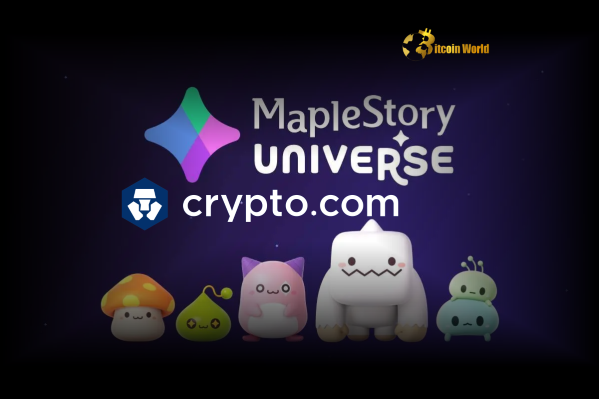BitcoinWorld

Decoding the Future: Why AI Coding Startups Grapple with Unprecedented Costs
For those immersed in the fast-paced world of cryptocurrency, the narrative of rapid innovation, sky-high valuations, and sudden market corrections is all too familiar. Now, a similar story is unfolding in the equally dynamic realm of artificial intelligence, particularly among AI coding startups. While the promise of AI assistants revolutionizing software development is immense, a closer look reveals a challenging economic reality: many of these seemingly booming ventures are grappling with massive expenses and razor-thin, often negative, margins. This parallels the infrastructure costs and scaling challenges seen in blockchain networks, where the underlying technology can be incredibly resource-intensive, impacting profitability despite high demand.
The Alarming Reality of High LLM Costs
The core of the financial struggle for many AI coding startups lies in the prohibitive LLM costs. Large Language Models (LLMs) are the engines powering these sophisticated coding assistants, enabling them to generate code, debug, and understand complex programming queries. However, utilizing these cutting-edge models comes with a hefty price tag, impacting the very viability of these businesses.
Consider the case of Windsurf, an AI coding startup that, despite attracting significant venture capital interest and achieving a valuation of nearly $3 billion, found itself in a precarious financial position. Insiders revealed that Windsurf, and many “vibe coders” in general, operated with “very negative” gross margins. This means the cost to run their product exceeded the revenue generated, a critical red flag for any business.
Why are these costs so high?
- Inference Costs: Each time an AI coding assistant processes a user’s request – whether it’s generating a line of code or suggesting a fix – it incurs an “inference cost” for querying the underlying LLM. These costs accumulate rapidly, especially with a growing user base.
- Model Sophistication: The market demands the most recent and advanced LLMs. Model makers like OpenAI and Anthropic constantly fine-tune their latest models for improvements in coding and debugging. To remain competitive, AI coding startups are pressured to adopt these newer, often more expensive, models.
- Computational Resources: Running and accessing these large models requires immense computational power, often leased from cloud providers, adding another layer of significant expense.
Nicholas Charriere, founder of Mocha, a vibe coding startup, bluntly stated, “Margins on all of the ‘code gen’ products are either neutral or negative. They’re absolutely abysmal.” He suggests that the variable costs across these startups are remarkably similar, indicating a systemic challenge rather than isolated incidents.
Navigating the Fierce Landscape of AI Development
Beyond the internal burden of LLM costs, AI coding startups face an intensely competitive market. This environment, ripe with rapid AI development and constant innovation, forces companies to spend heavily to keep pace, further eroding margins.
Key competitors include:
- Established Tech Giants: Companies like GitHub CoPilot (backed by Microsoft) and Anysphere Cursor already boast massive user bases and significant resources, making it difficult for smaller startups to gain market share.
- LLM Providers as Competitors: OpenAI offers Codex, and Anthropic offers Claude Code. These model makers are not just suppliers; they are increasingly direct competitors, leveraging their foundational technology to offer their own coding assistants. This creates a precarious dependency for startups, as their suppliers can also become their biggest rivals.
This dual role of model providers puts startups in a difficult position. As one insider noted, “It’s a very expensive business to run if you’re not going to be in the model game.”
The Build vs. Buy Dilemma in AI Development
One seemingly straightforward path to improving margins for AI coding startups is to build their own proprietary LLMs, thereby cutting out the cost of paying external suppliers. This strategy offers potential benefits:
- Cost Control: Eliminating supplier fees could significantly reduce operational expenses in the long run.
- Customization and Differentiation: A custom model can be tailored precisely to the startup’s specific use cases and user needs, potentially offering a unique competitive edge.
- Reduced Dependency: Less reliance on external providers mitigates the risk of those providers becoming direct competitors or raising prices unexpectedly.
However, this path is fraught with its own set of challenges and immense investment:
- Enormous Expense: Training a state-of-the-art LLM requires colossal computing power, vast datasets, and a team of highly specialized AI researchers and engineers. This is an undertaking that can cost hundreds of millions of dollars.
- Time and Expertise: It takes significant time and a deep pool of talent to develop, fine-tune, and maintain a competitive LLM.
- Risk of Obsolescence: The pace of AI development is so rapid that a custom model could become outdated quickly if not continuously updated and improved.
Windsurf’s co-founder and CEO, Varun Mohan, ultimately decided against building their own model due to the prohibitive costs. In contrast, Anysphere, the company behind Cursor, has publicly announced its intention to develop its own model, even attempting to hire key personnel from Anthropic’s Claude Code team. This highlights the diverging strategies and the high stakes involved in this crucial decision.
The Volatility of Tech Innovation and Venture Capital
The rapid cycles of tech innovation and the accompanying fluctuations in venture capital interest add another layer of complexity for AI coding startups. High valuations can quickly give way to difficult funding rounds or even sales, reflecting the underlying economic pressures.
Windsurf’s journey is a prime example. After talks of a $2.85 billion funding round led by Kleiner Perkins fell through, the startup planned to sell itself to OpenAI for a similar valuation. While that deal also famously collapsed, the motivation to sell was clear: to secure a high return before the company’s financial structure, burdened by negative margins, could undermine its value.
The eventual outcome for Windsurf saw its founders and key employees joining Google, resulting in a significant payout for shareholders, while the remaining business was acquired by Cognition. This complex exit strategy, while criticized by some for leaving employees without roles, was reportedly designed to maximize outcomes for all involved, underscoring the tough choices founders face in this high-stakes environment.
Pricing Challenges and Customer Loyalty in AI Services
For startups like Anysphere, even with a popular product like Cursor, managing LLM costs and maintaining profitability is a constant balancing act. The desire to pass on costs to users can backfire, impacting customer loyalty in a highly competitive market.
Anysphere recently adjusted its pricing structure, particularly for its most active users, to reflect the increased costs of running Anthropic’s latest Claude model. This move, which surprised some users of the $20-per-month Pro plan, led to an apology from CEO Michael Truell for unclear communication. This incident highlights a critical dilemma:
- Cost Recovery vs. User Retention: How much can a startup charge before users seek cheaper alternatives?
- Transparency in Pricing: Users expect clarity, especially when additional charges appear.
Despite Cursor reaching an impressive $500 million in ARR by June, investors caution that user loyalty might not be absolute. If a competitor develops a superior or more cost-effective tool, even popular applications could see user churn. This constant threat forces startups to innovate rapidly while carefully managing their financial models.
What Does This Mean for Broader AI Development?
The struggles faced by AI coding startups, a sector generating hundreds of millions in revenue annually and among the fastest-growing applications of LLMs, raise significant questions for the broader landscape of AI development and tech innovation.
If even this popular and revenue-generating sector has difficulty building sustainable businesses on top of foundational model makers, what does it imply for other, more nascent AI industries? Many emerging AI applications across various sectors – from healthcare to finance, creative arts to logistics – are similarly reliant on expensive LLMs or other complex AI models. Their profitability and long-term viability could face similar pressures.
The hope for many in the industry, including venture capital investors like Eric Nordlander of Google Ventures, is that “the inference cost today, that’s the most expensive it’s ever going to be.” The expectation is that technological advancements and increased competition among model providers will drive down these costs over time. Indeed, OpenAI’s introduction of GPT-5 with significantly lower fees than Anthropic’s Claude Opus 4.1 offers a glimmer of hope. Anysphere’s immediate adoption of GPT-5 for Cursor users demonstrates the industry’s quick response to cost-saving opportunities.
However, it’s not entirely clear if costs will consistently fall. Some of the latest, most advanced AI models have seen costs rise, as they require more computational resources for complex, multi-step tasks. The future trajectory of LLM costs remains a critical variable for the entire AI ecosystem.
Conclusion: Navigating the AI Gold Rush
The journey of AI coding startups like Windsurf and Anysphere offers a compelling, if cautionary, tale about the current state of AI development and tech innovation. While the demand for AI coding assistants is undeniable, the underlying economic model, heavily burdened by LLM costs and intense competition, presents formidable challenges.
Success in this arena will likely hinge on a delicate balance: the ability to secure significant venture capital, strategically decide between building or buying foundational models, innovate rapidly to stay ahead of competitors, and manage pricing with extreme care to retain a loyal user base. The future of AI will depend not just on technological breakthroughs, but on sustainable business models that can withstand the immense financial pressures of this new era.
To learn more about the latest AI market trends, explore our article on key developments shaping AI models and their institutional adoption.
This post Decoding the Future: Why AI Coding Startups Grapple with Unprecedented Costs first appeared on BitcoinWorld and is written by Editorial Team





